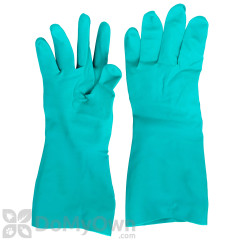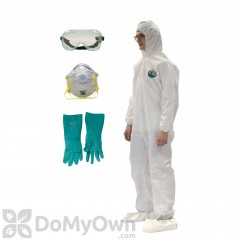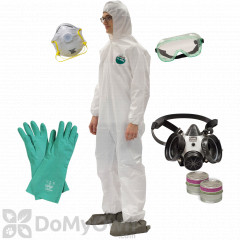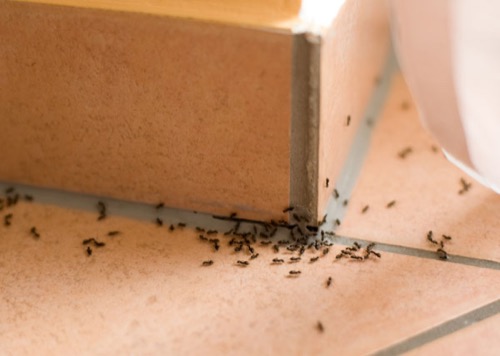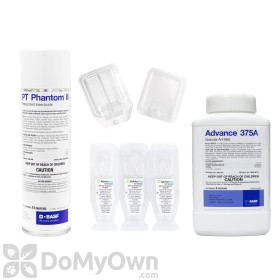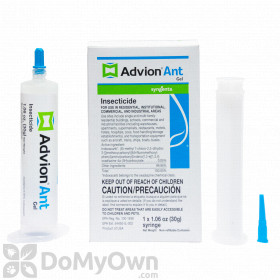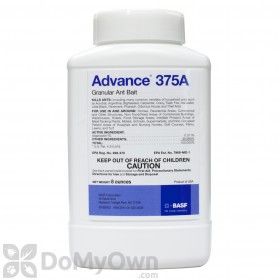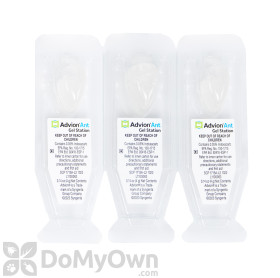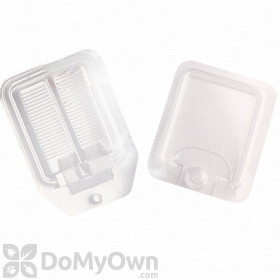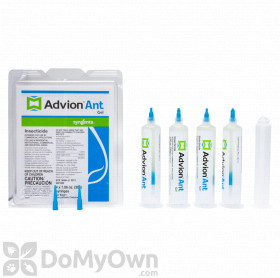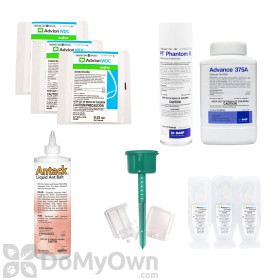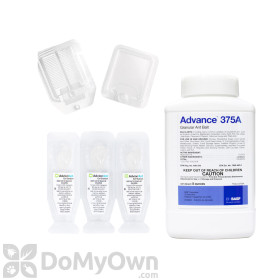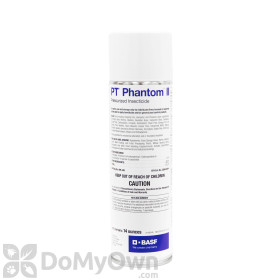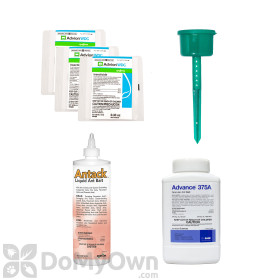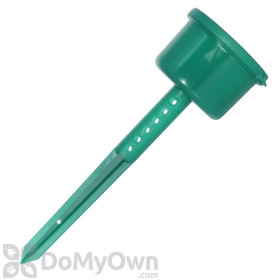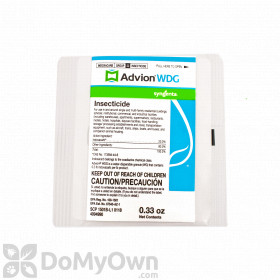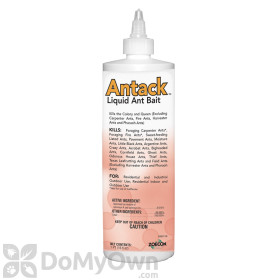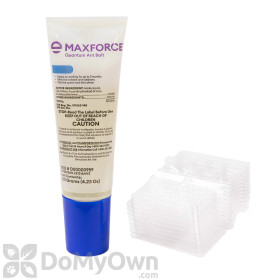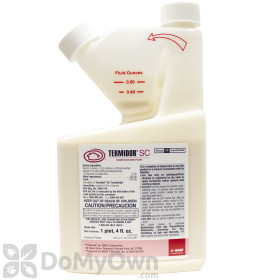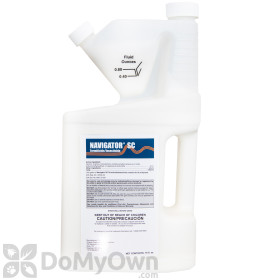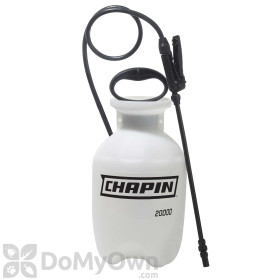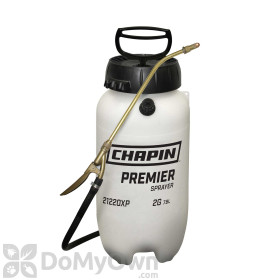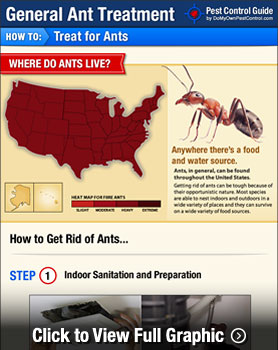Getting Rid of Ants For Good Requires A Variety of Methods
You Can Learn How To Kill Ants Yourself With These Steps
Ants are one of the most common pests both homeowners and renters encounter, leaving most to wonder how to get rid of ants. These tiny pests can be found both indoors and outside and will survive where they find food and water sources. Ant treatment must include proper sanitation in addition to an actual pesticide treatment using a combination of professional-grade outdoor and indoor ant sprays and ant baits.
There are many different species of ants, including fire ants, sugar ants, and tiny black ants. Not every ant control product is labeled to treat all ant species, so be sure to identify which ants you are trying to treat before you select a product.
The following steps will help you eliminate your ant problem:
Indoor Sanitation and Preparation
Get Rid of What Attracts Ants
Eliminate Food Sources for Ants Indoors
- Clean Kitchen Appliances. Ants in your kitchen can live off grease and food spills under and behind your appliances. Clean under and behind the stove, refrigerator, microwave, toaster, dishwasher, and around and underneath the sink.
- Empty and Clean Cabinets. Crumbs and food spills from stored food products provide a buffet for ants. Clean to eliminate this food source.
- Keep Food in Sealed Containers. Ants are small enough to get into cardboard packaging or loosely closed boxes and bags. Store food in metal, glass, or hard plastic sealable containers.
- Limit food consumption to one room of the house. Keeping all food and eating in one area of the home will eliminate crumbs and food spills and it limits your infestation to one area of the house.
- Clean the kitchen thoroughly each night before bed. Ants come out to feed at night, so cleaning the kitchen each night will leave nothing for foraging ants to eat. Wipe down kitchen countertops, wash all dishes, clean floors well, and put away all food.
- Vacuum or sweep all other non-food areas of the home every few days. Picking up stray crumbs and ant feces, skins, body parts, and egg sacs - which contain pheromones that attract other Ants to the same areas - will help keep your home clean.
- Empty pet food containers overnight, or cover tightly.
- Keep garbage cans clean and covered.
Eliminate Water Sources for Ants Indoors
- Fix leaky plumbing and sweating pipes.
- Before going to bed, dry all sinks, tubs, and showers completely and plug the drains.
- Place wet dish rags and sponges in an airtight plastic storage bag overnight, place them directly in the washing machine, or hang them outdoors to dry.
- Pet water dishes should be emptied and dried at night and refilled in the morning.
- Empty drip tray from under the refrigerator.
Eliminate Harborage and Ant Entry Points
- Seal cracks and crevices around window frames and door frames, around baseboards and other places where you have noticed ants entering the structure with caulk or another suitable material.
- Seal holes around cables pipes and wires with copper mesh or another suitable material.
Use Indoor Ant Baits and Sprays
- A non-repellent aerosol ant spray insecticide for use around doors, windows and baseboards.
- Two kinds of ant baits for use in cabinets, on counters, near sinks and other places where sprays would not be appropriate:
- a protein-based bait, and
- a carbohydrate-based bait
Products needed for Step 2
Indoor Ant Baiting
- In kitchen cabinets and on counter tops.
- Behind, next to, and under the stove.
- Near sinks or drains
- Around pipes, cords, and cables that come out of the wall.
- Behind and under bathroom fixtures.
- Around the medicine cabinet and vanity.
Products needed for Step 2A
Spraying for Ants Indoors
Using the included straw applicator, apply the spray directly into cracks and crevices along baseboards, under appliances, around door frames, window frames and in areas where utilities (cables, pipes, wires) enter into the structure and other areas where ants have been entering your structure.
Products needed for Step 2B
Outdoor Sanitation and Preparation
How to Get Rid of & Kill Ants Outside
Sanitation means more than cleaning up food that has been left out or sweeping up certain areas. In terms of ant control, sanitation means changing or removing the things ants need to live. All pests, including ants, need three main things to exist on your property:
- Food
- Water or sufficient moisture
- Shelter
Sanitation:
- To prevent ants from using trees and foliage to reach your home and gain access to it, trim back trees and shrubs so that the branches and foliage do not touch your home. This will also help avoid the need for pesticide applications.
- Eliminate moist, shady areas where ants like to nest by trimming bushes and shrubs up from the ground so you can see beneath them.
- Create a "dry zone" - an area devoid of any landscape material - that ants are likely to avoid by raking mulch, pine straw or other landscape bedding at least 6 inches from the foundation.
- To reduce moisture retention and discourage nest building, turn mulch or other bedding material every couple of weeks.
- Insects and other household pests are known to live in gutters and downspouts, so clean these out frequently.
- Keep your lawn short, mowing as often as necessary.
- To eliminate potential harborages for a wide variety of insects and pests, remove grass clippings, leaf piles, stacked wood, and other lawn debris.
- If fruit trees are on the property, pick fruit from trees when ripe and pick up fallen fruit from the ground.
- Outdoor trash cans and dumpsters provide food and shelter for pests, so store them as far away from structures as possible and check for tight fitting lids.
- Wash out trash cans and dumpsters with an ammonia solution when needed.
Products needed for Step 3
Outdoor Ant Baiting and Spraying
Products needed for Step 4
Spraying For Ants Outside
You will need a hand pump sprayer or a backpack sprayer to apply a non-repellent spray. Mix the labeled amount of product with water. Most homes will need 1-2 gallons of finished solution to complete a perimeter application. You will need to apply the insecticide up the foundation and out onto the ground to build a barrier. You can also apply the solution around window frames, door frames, places where cables, pipes and wires enter the structure, and any other place where you have noticed ants crawling or trailing on the building. You cannot spray many insecticides out in the yard as a broadcast spray, and most products require that applications are limited to once every 6 months. Always read the label to confirm these sorts of instructions before applying.
To apply Advion WDG, mix 1-2 packets of the pre-measured water dispersible granules with each gallon of water. Apply around the perimeter of the building, up and out along the foundation in a band not exceeding 10 feet total.
You should note that Advion WDG and other non-repellent insecticides are formulated to have a slow kill time to allow the ants to spread the product around the colony, and it can take several weeks to see the full results.
